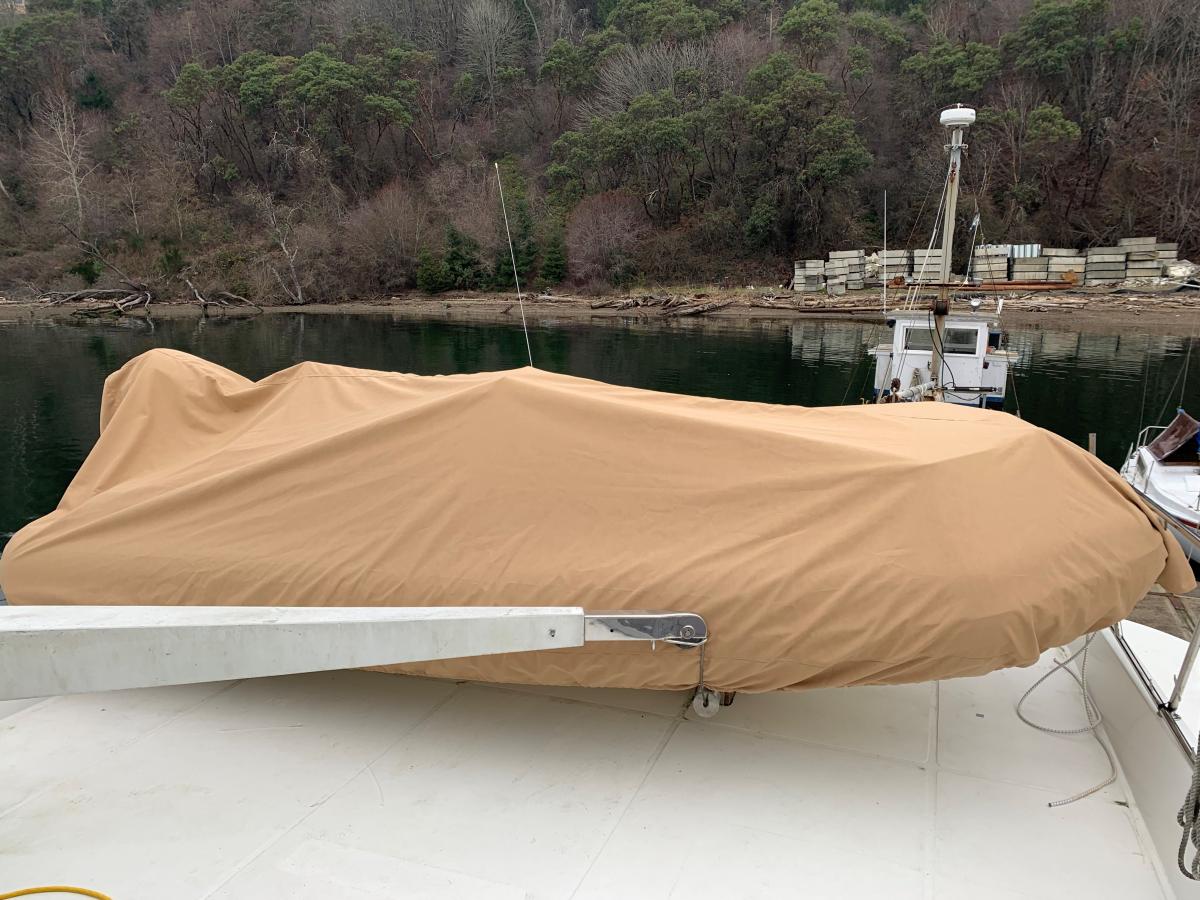I second looking at Sailrite videos... there are many very helpful..
Do some practicing if you havent used the Sailrite machine before..
For patterning
Some spring clips and/ or tape are handy to hold plastic roughly in place to start. By cutting a "V" shape in the plastic you can tape anywhere in the middle you want. When done simply lift the pattern and fold the V back in place to eliminate tape sticking to anything when no longer needed.
Helpful to have a picture or vision of how you think the cover should look e.g. One piece including the outboard or dingy separate from an outboard cover...
Get some heavy plastic sheet and try to fit it to the dingy. A plier stapler
https://www.homedepot.com/p/Arrow-Plier-Type-Stapler-P22/100196410
Is very handy to form darts to "shape" the flat sheet plastic to 3D shapes. Just pinch the plastic together and stapler it to hold temporarily. Try to make symetrical matching darts where more than one is reqd. If not right you can remove staples and try again.
For cut outs I find that some reinforced packaging tape applied to the plastic lets you make cut outs that don't tear.
If it doesn't look / feel right scrap the plastic and start over but sometimes you can tape a "repair" piece in place for a second or third try.
When satisfied you can use a straight edge to mark the darts and actually cut the excess material out. You can also roughly mark shapes / curves freehand using dashes of one color and later on your work surface, making solid lines using a straight edge or flexible guide to get nice straight / contoured lines that are difficult to do in place.
You need to either leave a consistent seam allowance (1/2"? I make a block & stick the dimension you want so its EZ to make a consistent allowance w /o the need to measure each time) any place you will be stitching together (around darts) and if you are going to include a hem for draw string or bungee cord you will have to add that as well.
Different colored Sharpies work well for marking different lines... finished edge, cut lines, fold lines, etc
There is a pretty extensive thread in the Gen Maint section re: DIY Canvas Tips & Tricks that might be helpful as a start / refresher.
When cutting material from the pattern and sewing it helps a LOT to have a large work surface next to the machine so the work piece stays relatively flat and isn't constantly falling to the floor and pulling away from the needle & walking foot.
Lastly... you might consider buying some seconds or close out material from RockfordSupply.com and actually making a "prototype" first. Great practice and I usually find myself thinking of several improvements or things I wish I thought of making my first of a lot of things. The bargain material isn't all that expensive and a good way to learn by actually doing. Then it's only your time invested. Besides a second storage cover might come in handy?
Good luck with the project and be sure to post some pics!


